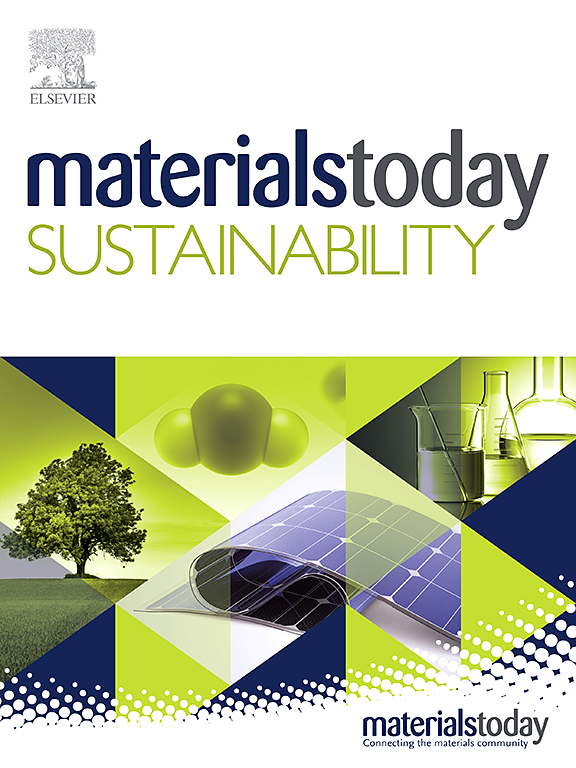Metal on metal oxide platforms for syngas production by chemical looping of methane: status and perspectives
IF 7.9
3区 材料科学
Q1 GREEN & SUSTAINABLE SCIENCE & TECHNOLOGY
引用次数: 0
Abstract
The energy-efficient conversion of methane (CH4) to syngas represents a transformative pathway for advancing the global hydrocarbon economy. While conventional reforming processes are well established for producing syngas, a key intermediate for high-value fuels and chemicals, chemical looping reforming of methane offers a compelling alternative. By decoupling the reduction and oxidation steps, chemical looping approaches inherently minimize side reactions and enhance product selectivity. This review explores the critical material and economic considerations necessary for the development of robust, energy-efficient chemical looping technologies for dry reforming of methane. Metal oxide-supported catalysts, incorporating noble or transition metals, are the primary catalysts for chemical looping applications. Catalyst performance is governed not only by the intrinsic reactivity of active metals toward CH4 and CO2 activation but also by the redox behavior of oxide supports and the interfacial dynamics at the metal–support boundary. Key strategies for improving methane conversion efficiency and ensuring long-term catalyst durability include lowering C–H bond activation barriers, enhancing the oxygen storage capacity of supports, and engineering metal–support interactions to suppress coking and sintering. This article reviews the current challenges and opportunities in methane conversion technology and presents a comprehensive evaluation of catalysts comprising Ni, Fe, Co, and Pt dispersed on CeO2, ZrO2, Ce1-xZrxO2, Al2O3, SiO2, and TiO2 supports, with a parallel focus on economic feasibility and industrial scalability.
甲烷化学环法合成气生产的金属氧化物平台:现状与展望
将甲烷(CH4)高效转化为合成气是推动全球碳氢化合物经济发展的变革途径。合成气是高价值燃料和化学品的关键中间体,而传统的重整工艺在合成气生产方面已经很成熟,而甲烷的化学环重整提供了一个令人信服的替代方案。通过将还原和氧化步骤解耦,化学环化方法固有地减少了副反应并提高了产物的选择性。本综述探讨了开发稳健、节能的甲烷干重整化学环技术所需的关键材料和经济考虑因素。含贵金属或过渡金属的金属氧化物负载催化剂是化学环应用的主要催化剂。催化剂的性能不仅取决于活性金属对CH4和CO2活化的固有反应活性,还取决于氧化物载体的氧化还原行为和金属-载体边界的界面动力学。提高甲烷转化效率和确保催化剂长期耐久性的关键策略包括降低C-H键激活障碍,提高载体的储氧能力,以及设计金属-载体相互作用以抑制焦化和烧结。本文回顾了目前甲烷转化技术面临的挑战和机遇,并对分散在CeO2、ZrO2、Ce1-xZrxO2、Al2O3、SiO2和TiO2载体上的Ni、Fe、Co和Pt催化剂进行了综合评价,同时重点讨论了经济可行性和工业可扩展性。
本文章由计算机程序翻译,如有差异,请以英文原文为准。
求助全文
约1分钟内获得全文
求助全文
来源期刊

Materials Today Sustainability
Multiple-
CiteScore
5.80
自引率
6.40%
发文量
174
审稿时长
32 days
期刊介绍:
Materials Today Sustainability is a multi-disciplinary journal covering all aspects of sustainability through materials science.
With a rapidly increasing population with growing demands, materials science has emerged as a critical discipline toward protecting of the environment and ensuring the long term survival of future generations.
 求助内容:
求助内容: 应助结果提醒方式:
应助结果提醒方式:


